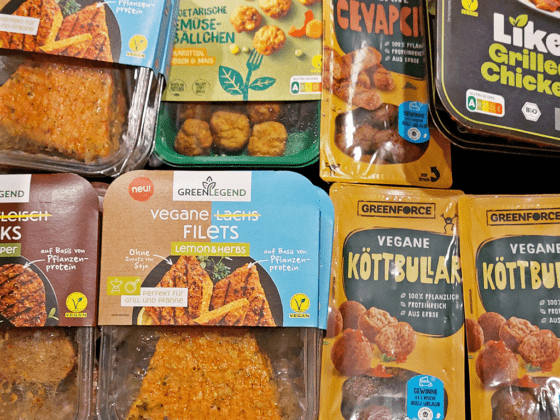Living sustainably can be expensive. That also applies to the upcoming start of school. Admittedly, when it comes to buying a satchel made from recycled PET bottles, you have to swallow hard in the face of hefty prices. But not all sustainable school supplies are expensive. The flustix editorial team has rummaged through catalogs and product ranges.
Stainless steel or Tritan drinking bottles
The drinking bottle must be light and robust, the cap must not drip. Sizes range from 0.3 to one liter. Tempting: In its current brochure, the Kaufland retail group is offering a drinking bottle with motifs from the popular children’s series “Paw Patrol” for just 2.99 euros – “approx. 500ml, with stainless steel lid”. The bottle itself is made of transparent plastic. No indication whether the material is BPA-free. BPA is the abbreviation for bisphenol A. The chemical is contained in many plastics, can dissolve and thus gets into the body. BPA is suspected of having an effect on the hormone system.
Better: drinking bottles made of precious metal or Tritan (high-quality and BPA-free plastic, also dishwasher safe). Glass with textile coating as protection is heavier, is more suitable for older children. No, none of these solutions can keep up with the Kaufland price. Prices for high-quality drinking bottles start from ten euros (from Nalgene made of Tritan), stainless steel models suitable for children cost from about 20 euros. With plastic closures on BPA free note pay attention. The extra cost of not using plastic is seven euros.
Also cheap lunch boxes lure with the Paw Patrol
The same game is played with lunch boxes. Here, too, Kaufland offers a solution with Paw Patrol themes for 2.99 euros. Material? Plastic of unknown origin, of course. No indication that it is free of harmful substances.
Better: As with the drinking bottles, stainless steel is a suitable material, as it is easy to transport and clean. Some high-quality plastic products are also suitable as an alternative. One thing that stands out here: Products that are labeled BPA-free also cost significantly more than the cheap version from the supermarket. The price for the classic Tupperware can: around 15 euros. Stainless steel models from ten euros, depending on size and quality. Price difference to the plastic version: plus seven euros.
Cheap plastic folders from textile discounters
Since the 1970s, we have become accustomed to the sight of cheap-looking junk folders with a short half-life in school backpacks. Not a good idea: these things are obviously not manufactured sustainably and usually only last until the next big break. In its current catalog, the textile discounter KIK offers five plastic exercise books for 1.49 euros. The retail chain Marktkauf tops the offer with ten staplers for 99 cents. The conclusion: it’s produced, transported and bought to be thrown away quickly
If you want to do something about the plastic madness in your school bag, you’ll have to dig a lot deeper into your pocket. Quick staplers made of recycled paper usually cost around one euro each, while wholesaler Amazon offers packs of ten for six euros – with a reference to recycled material (without an independent seal). Price difference for ten staplers: five euros.
Environmentally unfriendly protective covers discarded for a few cents
Why are these things actually made of plastic? The covers are supposed to protect the notebooks from dirt and dog-ears. But from moisture? Maybe superficially from a few splashes. But if something leaks, even the plastic cover won’t help. Only the prices are convincing: MacGeiz offers booklet covers for 15 cents each. Alternatives? Solid recycled paper. Prices for higher-quality versions are around five euros for ten pieces. There are also numerous instructions on the web for homemade envelopes made from recycled paper and fabrics from discarded clothing.
Malte Biss, flustix founder, strongly recommends using envelopes made from recycled paper. Biss says, “Plastic staplers and envelopes are particularly harmful to the environment. They are mostly made of cheap plastic in Asia, don’t last long and end up in the trash after a very short time.” Particularly curious: “The sleeves themselves are not considered packaging, so officially they are not even allowed in the yellow bag. But if ten sleeves of them are packed in a plastic cover, the cover of the sleeves may go into the recycling garbage can.” Absurd. In the case of high-quality protective sleeves, we actually recommend the “intelligent misthrow” into the yellow garbage can sometimes.
Oh yes, the price difference: ten booklet covers made of recycled paper are about 3.50 euros more expensive than the cheap offer from MacGeiz. But if you like to tinker, you can also make your own covers from recycled paper. It’s fun and free of charge.
The plastic trap also snaps shut for rulers
Popular among kids, yet anything but sustainable: colorful snap rulers that roll up, snap open and snap shut. Sure, the parts are made of flexible plastic and are presumably full of plasticizers. The discounter MacGeiz currently offers snap rulers for 3.99 euros (no indication of the origin of the material). Better: classic wooden ruler. Doesn’t snap, but lasts forever. Look out for FSC certification. Price: from three euros (15-cm version). Price difference: one euro – in favor of the sustainable solution.
Plastic is a must for a set square
After elementary school at the latest, the protractor is part of the standard equipment. The colored degrees on the transparent material are decisive for the function of the device. The original from the geo-triangle inventor Aristo is made of Plexiglas. That sounds plastic-free, but it’s not: Plexiglas is originally a brand name for plastics made of polymethyl methacrylate. Starting price from 80 cents. High-quality models cost around seven euros.
Erasers: Sustainable alternatives are cheaper than rubber bands of unknown origin
A nasty plastic trap. Motivated erasers, which are particularly popular with children, are often made of low-quality plastic. Example: MacGeiz offers stackable erasers with different monster motifs. Without any indication of origin or hazardous substances. Alternative? Erasers made of natural rubber or items labeled “PVC-free.” A classic is the red-blue eraser, which not only erases better, but also has a dual function: The red side can be used to remove pencil, and the colored side can be used to remove ink. This saves the ink eraser. It’s not called ink killer for nothing: many of these popular correction pencil models contain formaldehyde as a solvent, which is considered carcinogenic.
What are the costs? Motif erasers from MacGeiz cost 1.50 euros. The red and blue classic is available from FaberCastell (“latexfree”) for just 63 cents.
Poison-free pencils should be a given
When children paint, the paint doesn’t just stay on the paper. It is therefore all the more important that no pens containing toxic substances end up in the school bag. However, an investigation by Stiftung Warentest and Ökotest produced shocking results: around one third of the inks, fiber-tip pens and crayons tested contained substances that were hazardous to health. While with other articles the higher price is also synonymous with rising quality and greater sustainability, this is not necessarily true here: Lamy products are also among those writing instruments that received poor marks. What to do? In any case, pay attention to the seals: DIN EN 71 prohibits heavy metals such as lead, cadmium and mercury in toys and crayons. In the case of wooden pencils, also look for the FSC seal.
School bags: This is where sustainability really costs a lot of money
The most difficult decision – because the satchel is not just about sustainability, but also about wearing comfort, ergonomics and, of course, safety aspects such as reflector properties. Lidl offers a complete satchel set for 49 euros, consisting of a backpack, sports bag, student case and pencil case. The manufacturer is Herlitz. Sustainable alternatives that also meet all other requirements can cost a lot of money. The sustainability portal Utopia.de recommends, for example, satchels made from 100 percent recycled PET bottles for the start of school. Starting price: not less than 200 euros. Again, be critical of manufacturers’ claims. We remember the case of the successful start-up Got Bag, which advertised bags made from recycled marine plastic.
 English
English Deutsch
Deutsch




